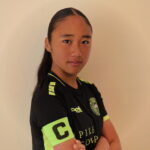FC Virginia upset amazing JFA Academy to win first Disney Soccer Showcase
The u17 FC Virginia Explosion shocked the Disney Soccer Showcase crowds by downing the impressive Japan Football Association Academy team in the finals Sunday afternoon at the newly named ESPN Wide World of Sports facility. It was a game seemingly no one thought any team at this year’s Disney event had a prayer of winning, except the team that did.
JFA had just won all three of their Predator Division group games by a combined score of 27 to 1, quickly becoming the “buzz” of what many consider to be the best youth girls soccer tournament on the planet. Their run in the event was even featured by Soccer America Magazine on Saturday under the title “Japanese academy steals show”, with an opening line of “No team has dominated at Disney’s Soccer Showcase quite like Japan’s JFA Academy Fukushima”.
The SA piece wasn’t an altogether over-the-top statement considering the quality of the teams the Japanese equivalent of US Soccer’s Bradenton Academy – an under-17 residential academy operated by the US Soccer Federation focused on developing the country’s best soccer prospects – had just dismantled.
Game 1: 7-0 win over Ohio Premier Eagles, Ohio South State runners up
Game 2: 11-1 win over Baltimore Bays 93, defending Maryland State Cup Champions
Game 3: 8-0 win over Hershey Soccer Kickkats, CASL and Jefferson Cup Champions
However, from the first news of the 7-0 win over Ohio Premier, the staff and players with FCV started dreaming of the opportunity to face off against the Japan team in the finals. Believing such a match would provide just the sort of challenge, and opportunity for learning that the club feels is most important for the development of their players.
“We would rather play a great team and lose, then play a game against a team we already know and win,” said club President Terry Foley, who also holds the post of General Manager at the expansion WPS club – Philadelphia Independence. “The opportunity to play against the team that virtually every coach I spoke with said was the best youth team they had ever seen, provided an amazing opportunity that youth club teams just don’t get very often. It was literally priceless, and now our girls have a new found confidence that will carry them even further – and make them much more seasoned college recruits to be considered by all those same coaches who thought we could never win that game.”
The Explosion earned the opportunity to play JFA by virtue of their own impressive run in the tournament, which also doubled as their first three of nine regular season Elite Clubs National League matches. By luck of the draw, FCV’s ECNL group was aligned to play the champion of the “at-large” group A, the one with JFA. FCV won all three of their games, to take nine out of nine possible points in ECNL play, while clinching first place in their group after the first two wins.
Game 1: 3-2 win over Soccerplus Connecticut (goals: Caitlyn McLaughlin, Aly Shaughnessy, Kelly Abt. Assists: Meredith Doherty, McLaughlin, McLaughlin)
Game 2: 1-0 win over Birmingham United Elite, Alabama State Champs (goal: Lauren McKenzie, unassisted)
Game 3: 2-0 win over Freestate United (goals: own goal off Ashleigh Hammer corner, Abt. Assist Doherty)
With other group results helping FCV clinch the final after two games, the third win would have not have been necessary in order to face JFA. However, the mentality of resting for a final when possible was not allowed to creep into the thinking, as every game in ECNL play counts towards the national league standings.
“Three more points in ECNL play was far more important than resting to play in a final that contributes nothing to the team’s league position. That is a new, but welcome change in the typical youth soccer thinking, and is exactly why we play in this league”, said Foley. “The development of our players is maximized when every game counts, and every game is against good competition.”
Foley’s focus on ECNL paid dividends, as FC Virginia now sit in a 4-way tie for sixth place in the league’s Challenge B division. Not entirely impressive at first glance, but FCV is one of only three clubs in twenty to have a 100% win record, and every club ahead of them in the standings has either finished all nine games of their season, or played at least six.
CURRENT ECNL U17 CHALLENGE B STANDINGS
Club, Games Played, Win, Loss, Tie, Goal Difference, Points
Birmingham United 9, 6, 3, 0, +12, 18
FC Delco 6, 4, 1, 1, +6, 13
San Juan SC 6, 4, 2, 0, +5, 12
Concorde Fire 6, 4, 2, 0, +4, 12
St. Louis Scott Gallagher 9, 4, 5, 0, -3, 12
SC Del Sol 3, 3, 0, 0, +8, 9
Albertson Fury 3, 3, 0, 0, +5, 9
FC Virginia 3, 3, 0, 0, +4, 9
CESA Premier 6, 3, 3, 0, +4, 9
CASL Spartan Elite 6, 2, 2, 2, -1, 8
Pleasanton Rage 3, 2, 1, 0, +2, 6
Challenge SC 6, 1, 2, 3, -2, 6
Crossfire Premier 3, 1, 1, 1, +1, 4
Minnesota Thunder 3, 1, 1, 1, 0, 4
Soccerplus Connecticut 3, 1, 2, 0, -2, 3
Atlanta Fire United 6, 0, 3, 3, -4, 3
Sereno SC 3, 0, 2, 1, -3, 1
Solar 6, 0, 5, 1, -8, 1
Freestate SA 3, 0, 3, 0, -7, 0
Virginia Rush 6, 0, 6, 0, -24, 0
With the win over Birmingham, the FCV coaching staff made plans to scout the Japanese during their final group game, which was being played at the same time as the final FCV group game. After securing their final ECNL win, the preparation of the players began immediately, focusing first on the need to turn the players’ initial reaction of fear into one of a feeling of genuine opportunity. An opportunity to test themselves, the opportunity to play in front of a large crowd, and the opportunity to learn more from one match about the game and themselves than in any other game they’ve played so far in their career.
The match started with the expected intensity and precision by the Japanese, but FCV matched their opponent’s 4-3-3 formation with the same on their side, emphasizing the need to match up against the incredibly talented JFA midfield, to focus on pressure/cover fundamentals, and not to sit back and defend; rather to win balls, cherish possession, and go on the attack themselves.
Privately, the FCV coaches conceded after the match, that their initial goal had been to concede the wings and force crosses as JFA’s primary weapon – which FCV felt they could win thanks to their physical superiority. If they could keep JFA from scoring for the first 15 minutes, they planned to build on that confidence and find ways to threaten on their own. With every intercepted pass, 1v1 defensive battle won, cross defended, and every successful pass of their own possession sequences, FCV’s confidence grew, even as their energy drained.
Half way through the first half, FCV cleared their bench in a single six-player substitution rotation, trusting in the depth of their talent, pacing energy use, but risking everything. The move was later described to also be a way for all players to be seen by the many college coaches in attendance, who were only able to stay until half time before having to hurry to the airport.
The competitive risk paid off as no players were injured, and the coach’s confidence rewarded, as there was no dip in form from the substitutions. Goalkeeper Jane Aman – most observers’ “Player of the Game” also had a stellar half. Though not being called on to make many drastic saves, she used her full range to gobble up several defense-splitting passes off the feet of JFA attackers. Aman’s steady performance and the platoon of substitutes following their teammates’ inspiring performances carried FCV into halftime knotted at 0-0.
Halftime brought few changes in strategy, but would certainly require a reminder of their emphasis on staying sharp mentally and executing the game plan.
The start of the second half saw another rotation of players for FCV, giving rest to many of the ones who had just gone a full 45 minutes in the first half. This liberal use of substitutes was not employed by the Japanese team, who had limited their subs in the first half, and would not use many for the duration of the match.
In previous group games, JFA had gone deep into their roster once leads were built, but hardly dropping any form, giving many youngsters valuable playing time. The Japanese roster was talented from top to bottom, but also consisted of many young players. They employed seven 16 year olds, three 15 year olds, and four each of 14 and 13 year olds – including their 14-year old goalkeeper. Four of these players were recently named to the Japanese under-16 national team that would compete to qualify the country for the upcoming under-17 FIFA Women’s World Cup.
SIDE BAR
Though it was always part of ECNL rules, Disney also instituted a no re-entry substitution rule on a per-half basis, as well as allowing substitutions on any stoppage – aligning the tournament more closely with FIFA rules. This means that once a player is subbed off in a half, they cannot come back on until the next half – or overtime.
JFA wasted no time resuming their attacking flair, causing many tense moments. The Americans, however, won a lot of balls in midfield, and were able to delay enough defensively to constantly produce cover for their 1v1 battles, while JFA players rarely made runs that went un-tracked.
While FCV continued focusing on conceding the wings in favor of defending centrally and exploiting the space left by JFA’s attacking fullbacks, the Japanese eventually punched through with an unstoppable 20-yard rocket to the upper left of Aman around the 60th minute. It was a purely hit strike on the end of a hard left-to-right run across the top of Virginia’s penalty area.
The goal could have been the signal to wave the white flag for the Virginia girls, but instead it seemed to inspired them to work even harder. Instead of becoming deflated, and surrendering to their fatigue, they rallied to put on several strong spells of possession, while pressuring JFA enough to keep their dangerous fullbacks from getting too involved in the attack.
The effort paid off near the 70th minute when the FCV pressure earned a free kick from 15 yards off the right corner of the JFA penalty area. Defensive midfielder, and free-kick specialist, Ashleigh Hammer whipped a perfect right-footed service toward the JFA goal that curved just out of the reach of 14-year old goalkeeper Nene Inoue, where Caitlyn McLaughlin fired home from close range.
However, though the celebration by FCV supporters was intense, they were actually in the minority on the day, as most players and non-FCV parents in attendance were actively supporting the JFA side, even booing a few times when calls were made for FCV. The lack of support by their fellow American youth players and families did not go unnoticed by the FCV players however, who later agreed hearing the booing only made them more determined to win the match.
Not wanting to even think about having to find 20 more minutes of energy for an overtime period, both teams continued to attack as much as they could muster, with FCV’s Aman continuing her dominance, making several key stops and distributing well to help preserve the score line.
The effort by both sides was not rewarded however, and it would take two 10-minute overtime periods to decide the match, then penalty kicks if necessary. While confident in Aman’s ability on penalties, the technical superiority of the JFA ladies couldn’t have inspired much confidence that FCV could prevail if things got to that stage. Winning outright by scoring again from the field was clearly the plan.
It didn’t take long for that plan to come to fruition, thanks to a free kick awarded about 25 yards from goal, slightly left of the center of the field. FCV attacking midfielder Aly Shaughnessy – who had been winning many midfield battles – stood over the ball as the only option, and with the power to strike hard from that distance. The JFA defensive wall lined up on the left post with Inoue taking up the exposed space on the other half of the goal. Shaughnessy drove her shot low around the right of the wall with enough bend to get it to within a yard of the left post. It arrived perfectly to strike ground exactly at the point where Inoue had to arrive. When she did, there was still enough power to push through the save and softly nestle in side netting for what surely must be the biggest goal of the tall redhead’s life.
With fifteen minutes remaining in total, the game was still far from over. In previous games, JFA had put four goals away in an 11-minute span, and FCV was now in all-out desperation mode. The first part of overtime ended with both teams fighting to catch their breath however, as the Japanese finally started showing signs of fatigue.
Without completely abandoning their game plan, FCV was clearly looking just to hold on for the final ten minutes, and would need every ounce of energy and courage to do it. JFA started pushing with everything they had, and for the first time in the game starting to knock a few long balls over 25 yards looking for the equalizer. They broke through on more than one occasion, but nearly every time a shot was about to leave a foot inside the FCV area, it was either blocked, or enough pressure was put on the shooter to force a wide bid.
Aman was also called upon several times in the final ten minutes, either breaking up long balls, defending crosses, or covering enough goal to force errant shots that skidded narrowly wide of her goal. The most impressive save of the game by the 5’9” junior from Annandale High School came nearly at the stroke of the 20 minute overtime period, diving left to save an 8 yard strike JFA’s Uiu Narumiya.
Barely a minute later, FCV had won the Disney championship for the first time in their own, or club history, launching ecstatic celebration from players, coaches, and parents.
When asked after the match why he thought FCV prevailed where their other three opponents had fallen short, JFA Head Coach Morinao Imaizumi credited the motivation of playing in a final, hard work, always applying pressure, maintaining good cover, and maintaining very good concentration as the keys to the FCV victory over his impressive side.
After the win and traditional awards ceremony, the teams wanted to get a team photo together, much to the delight of the Disney staff managing the awards area. That photo led to an amazing display of sportsmanship and international respect, as all sense of competition was dropped, and both teams morphed into any other large group of teenage girls – a big ball of talking and laughter.
The players mingled for over an hour, socializing, teaching each other their language, giggling about boyfriends, and even eventually evolving into playing fun pranks on each other. The groups exchanged autographed team photos, took more photos together, and eventually exited the Disney facility arm in arm – a truly touching display of international sportsmanship.
It was a fitting end to the large traveling staff of JFA, as well as touching moment for all in observance. As JFA is an academic academy as well as football school, Imaizumi explained that non-soccer aspects of their trip were just as important as the soccer itself.
He explained the reasons for their coming to America, and to play in this tournament as three-fold, “…First, we come to America to play against American girls, who we believe are the best at football. To learn from their tactics and how to play good football. Second, We don’t have a tournament like this [Disney], so this gives us very good experience. Third, this is a good situation [referring to the two teams mingling with each other a few feet away]. Very important. We usually only study English conversation.“
It would appear then that both teams got what they came for, and more, with everyone going home satisfied they have accomplished their goals. For the JFA girls, they got the tough soccer competition they rarely find in their own country, and engaged in the sort of real conversational English and cross-cultural socialization you just can’t replicate in the classroom. For the FCV girls – who had come to the awards ceremony questioning why so many of their fellow youth players and parents in attendance at the match were booing them – they must have learned that working as team and never giving up really can accomplish great success, but that the game of soccer has so much more to teach than winning or losing on the field.
That, and how fascinated Japanese teenagers can become with long blond hair, and just a little pre-wrap.
JFA Roster
4 – Defender – Hikari Taguchi – 16 years old
7 – Midfielder –Haruna Kawahima – 16 years old
6 – Midfielder –Naoko Wada – 16 years old
3 – Defender –Kaho Urata – 16 years old
9 – Forward –Yuka Honda – 16 years old
10 – Midfielder –Yoko Tanaka – 16 years old
8 – Midfielder –Natsuki Yoshimi – 16 years old
2 – Defender –Manami Sunaga – 15 years old
13 – Midfielder –Manami Yoshitake – 15 years old
15 – Forward –Hikaru Kojima – 15 years old
11 – Midfielder –Yui Narumiya – 14 years old
1 – Goalkeeper –Nene Inoue – 14 years old
16 – Forward –Rika Masuya – 14 years old
17 – Defender –Shiori Miyake – 14 years old
18 – Midfielder –Ruka Norimatsu – 13 years old
19 – Midfielder –Megumi Kadoi – 13 years old
20 – Midfielder –Yuki Mizutani – 13 years old
23 – Midfielder –Miku Kojima – 13 years old
Coach – Morinao Imaizumi
Website – http://www.jfa-academy.jp/











